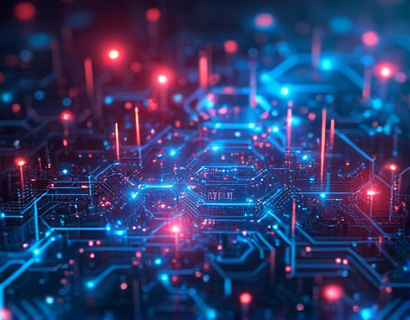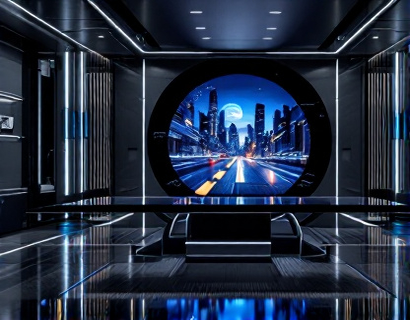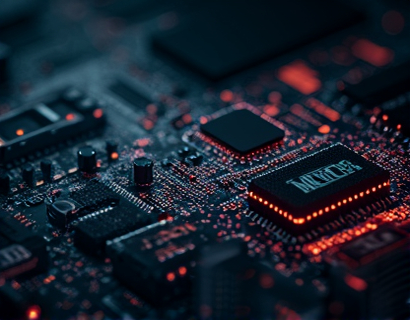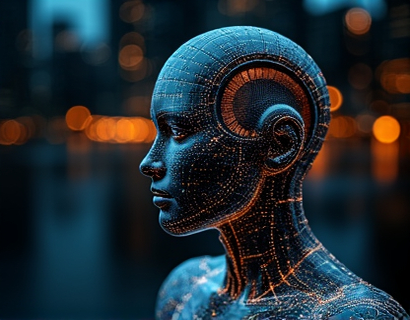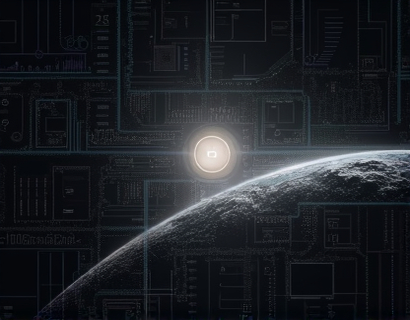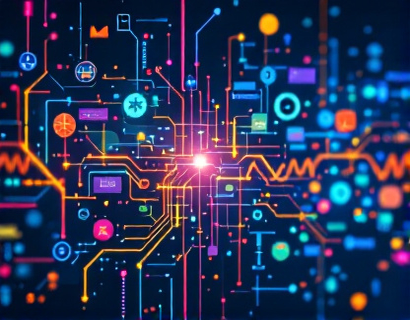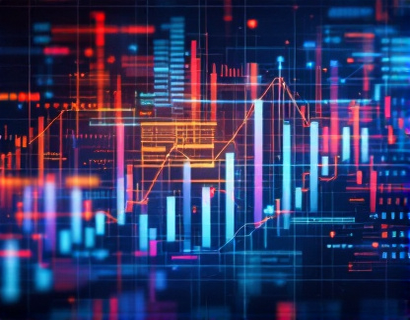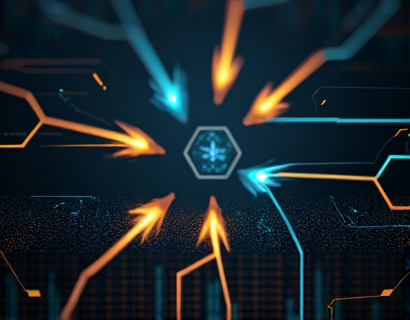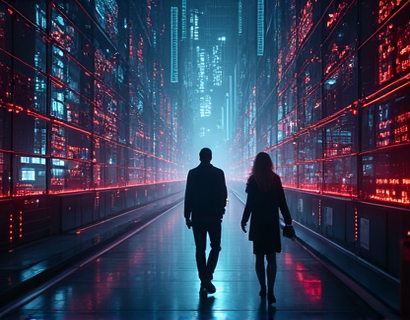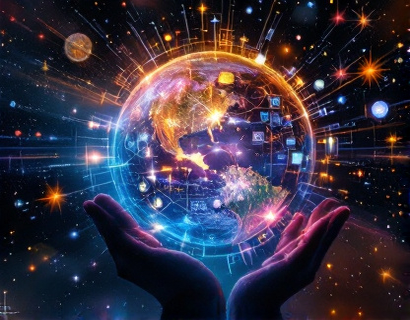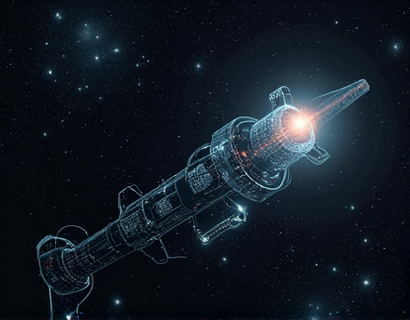Decentralized Productivity: Unleashing AI and Crypto's Potential for Next-Gen Digital Transformation
The intersection of cryptocurrency and artificial intelligence (AI) is giving rise to a new era of digital productivity, one that promises to transform how we work, collaborate, and manage tasks. This article delves into the transformative power of merging these two revolutionary technologies to create a decentralized ecosystem that enhances efficiency, simplifies tasks, and opens up new possibilities for innovation.
The traditional centralized models of productivity are being challenged by decentralized technologies that leverage blockchain and AI. These technologies offer a more secure, transparent, and user-centric approach to digital interactions. By understanding the core principles and applications of decentralized productivity, we can better appreciate the potential impact on various industries and daily life.
Understanding Decentralized Productivity
Decentralized productivity refers to the use of decentralized technologies to improve and streamline productivity processes. This involves leveraging blockchain for secure and transparent data management, smart contracts for automated task execution, and AI for intelligent task management and optimization. The goal is to create a system where users have more control over their data and processes, reducing reliance on centralized authorities and intermediaries.
One of the key benefits of decentralized productivity is enhanced security. Blockchain technology ensures that data is immutable and tamper-proof, reducing the risk of data breaches and unauthorized access. This is particularly important in industries where data privacy and integrity are paramount, such as finance, healthcare, and government.
Transparency is another significant advantage. In a decentralized system, all transactions and processes are recorded on a public ledger, making it easier to track and verify activities. This level of transparency builds trust among users and stakeholders, fostering a more collaborative and efficient environment.
AI in Decentralized Productivity
AI plays a crucial role in decentralized productivity by providing intelligent solutions that can adapt to user needs and optimize workflows. Machine learning algorithms can analyze vast amounts of data to identify patterns, predict trends, and automate repetitive tasks. This not only saves time but also reduces the potential for human error.
In a decentralized context, AI can be used to manage and coordinate tasks across a network of nodes. For example, AI-driven bots can facilitate communication, manage resources, and ensure that tasks are completed efficiently. These bots can operate autonomously, making decisions based on predefined rules and real-time data, without the need for human intervention.
Moreover, AI can enhance the user experience by providing personalized recommendations and insights. By analyzing user behavior and preferences, AI can suggest optimal workflows, tools, and resources tailored to individual needs. This level of customization is difficult to achieve in centralized systems, where processes are often one-size-fits-all.
Cryptocurrency and Decentralized Finance (DeFi)
Cryptocurrency is a fundamental component of decentralized productivity, serving as the medium of exchange and value storage. Decentralized Finance (DeFi) platforms build on blockchain technology to offer financial services without traditional intermediaries. These platforms enable users to lend, borrow, trade, and invest in a secure and transparent manner.
In the context of productivity, DeFi can provide financial tools that support decentralized projects and initiatives. For instance, yield farming allows users to earn rewards by lending their cryptocurrencies to decentralized protocols. This not only generates passive income but also incentivizes participation in the decentralized ecosystem.
Stablecoins, a type of cryptocurrency pegged to stable assets like the US dollar, offer price stability and reduce volatility risks. This makes them suitable for everyday transactions and payments within decentralized productivity applications, ensuring that users can transact without the fear of significant price fluctuations.
Cutting-Edge Applications
The combination of AI and decentralized technologies is giving birth to innovative applications that enhance productivity in various domains. Here are some cutting-edge examples:
- Decentralized Task Management: Platforms like Taskcoin use blockchain to create a decentralized task management system. Users can assign, track, and reward tasks using a native cryptocurrency. AI algorithms optimize task allocation and ensure that resources are used efficiently.
- Smart Contract Automation: Smart contracts can automate complex workflows by executing predefined actions when certain conditions are met. For example, in project management, smart contracts can trigger payments upon completion of milestones, eliminating the need for manual approvals and delays.
- AI-Powered Content Creation: Decentralized content creation platforms leverage AI to generate high-quality content, such as articles, images, and videos. These platforms can be community-driven, allowing users to contribute and monetize content through cryptocurrency rewards.
- Decentralized Collaboration Tools: Tools like Quorum and Filecoin use blockchain to create decentralized storage and collaboration environments. AI enhances these tools by providing intelligent search capabilities, content recommendation systems, and secure communication channels.
- Predictive Maintenance: In industrial settings, AI-driven predictive maintenance systems can monitor equipment and predict failures before they occur. When integrated with a decentralized network, these systems can share data and resources across multiple locations, optimizing maintenance schedules and reducing downtime.
These applications demonstrate the potential of decentralized productivity to transform various aspects of work and daily life. By leveraging the strengths of both AI and blockchain, these solutions offer more secure, transparent, and efficient alternatives to traditional centralized systems.
Future of Decentralized Technology and AI-Driven Solutions
The future of decentralized technology and AI-driven solutions is promising, with ongoing advancements poised to further enhance productivity and innovation. Here are some key trends and developments to watch:
First, the integration of 5G and IoT (Internet of Things) technologies will create a more connected and data-rich environment. This will enable AI algorithms to process real-time data from a vast array of devices, leading to more accurate predictions and smarter decision-making.
Second, the development of scalable blockchain solutions, such as layer 2 protocols and sharding, will address current limitations in transaction speed and cost. This will make decentralized applications more practical and accessible for widespread use in productivity scenarios.
Third, the rise of decentralized autonomous organizations (DAOs) is reshaping how communities govern and manage resources. DAOs combine AI-driven decision-making with decentralized governance, creating self-managing entities that can operate without central authority.
Fourth, the evolution of user interface (UI) and user experience (UX) design for decentralized applications will be crucial. As these technologies become more complex, intuitive and user-friendly interfaces will be essential to ensure broad adoption and ease of use.
Lastly, the increasing focus on sustainability and environmental impact will drive the adoption of green blockchain solutions. Energy-efficient consensus mechanisms and renewable energy sources will make decentralized systems more eco-friendly, aligning with global efforts to reduce carbon footprints.
In conclusion, the convergence of AI and decentralized technologies is paving the way for a new era of digital productivity. By harnessing the power of blockchain and AI, we can create more secure, transparent, and efficient systems that empower users and drive innovation. As these technologies continue to evolve, the possibilities for transforming industries and enhancing daily life are endless.




